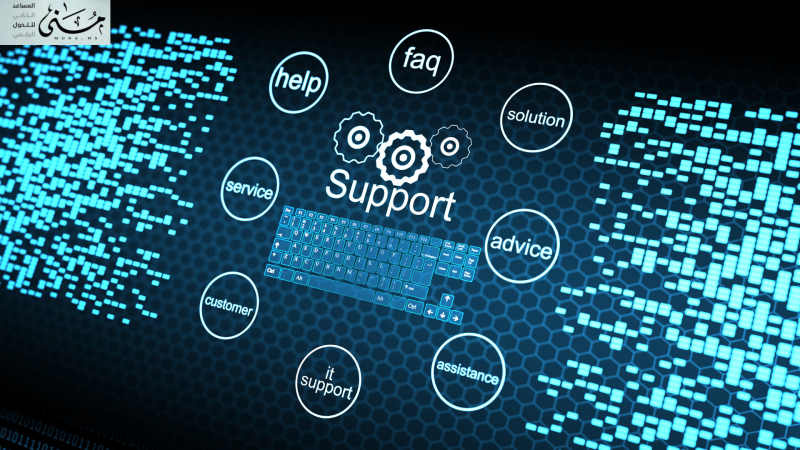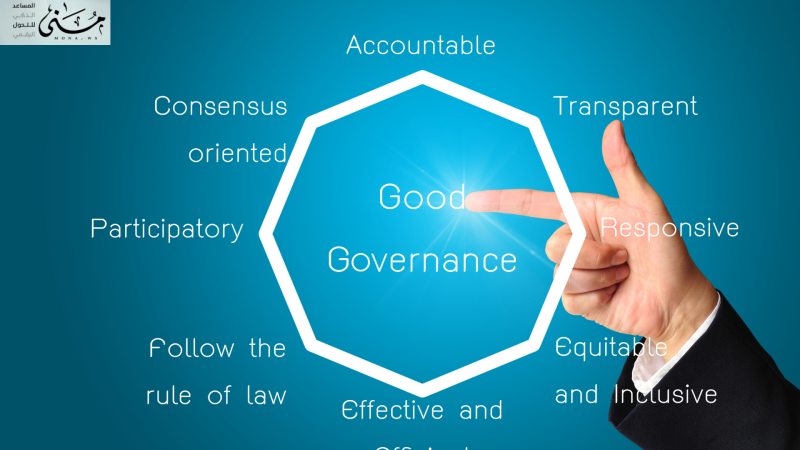In many organizations, we hear terms like "policies and procedures," often used in an inaccurate manner. Policies are treated as mere written instructions or internal regulations, when in fact, policies represent the strategic framework that governs decision-making within an organization and defines its behavioral and organizational identity.
The absence or weakness of clear policies and procedures often leads to haphazard management, conflicting decisions, and vague authority. This makes policies and procedures an indispensable pillar of any work environment striving for administrative maturity.
Why are policies and procedures more than just documents?
Policies and procedures are more than just documents for several reasons:
- Regulatory framework for decisions
Policies and procedures play a crucial role in guiding the decision-making process, providing a reference point when faced with unprecedented situations or crises requiring administrative resolution. When policies are written and made public, there is less room for individual discretion and less potential for conflicting directives.
- Promoting justice and transparency
By having clear policies and procedures in place, an organization can ensure fair treatment for all employees and subject decisions to specific controls, which enhances transparency and job satisfaction, and reduces grievances or frustration resulting from impromptu decisions.
- Risk Management and Compliance
Policies and procedures play an important role in mitigating risks and ensuring compliance with laws and regulations, particularly in organizations subject to legal or regulatory oversight. They serve as a proactive barrier against administrative or legal lapses.
What happens when policies are absent or unscientifically implemented?
When policies and procedures are absent or poorly designed, organizations begin to create temporary solutions for every situation, and work becomes a series of hasty reactions. This approach has unpredictable outcomes, exposes the organization to wasted time and resources, and a gradual erosion of institutional discipline. Worse still, some organizations resort to copying existing policies without adapting them to their realities, rendering them worthless in practice.
The most important components of formulating effective policies are the following:
- Realism in construction
Policies must be based on a thorough understanding of the organization's reality: its goals, capabilities, challenges, and the nature of its workforce. Relying on ready-made models without adapting them renders the policy an impractical text.
- Stakeholder participation
For policies and procedures to be enforceable, stakeholders (such as executives, operations teams, HR, etc.) must be involved in the formulation stages to ensure integrated perspectives.
C. Updatability
The world is changing rapidly, so policies and procedures must be formulated in a way that enables the organization to update them without creating organizational chaos. This is where the importance of digital tools such asDocSuite Policies makes it easy to manage policies electronically and link them to changing business procedures.
Digital tools to support policy and procedure formulation
As institutional systems evolve, policy and procedure formulation is no longer done through files.Word or Excel, but specialized systems such as DocSuite Policies have emerged, which provides an intelligent environment for preparing policies, linking them to procedures, distributing them to departments, and updating them centrally without the need to send paper copies or mail them.
What does it offer?DocSuite on this side?
- Ready-made templates for building policies according to global governance standards.
- Direct link between the policies and executive procedures of each department.
- Automatic alerts for necessary updates and modifications periodically.
- Proof of employee commitment through electronic signature or verification of sight.
Benefits of having written and digitally managed organizational policies
There are several benefits to having organizational policies and procedures in place, including:
- Facilitate daily administrative guidance
Having policies makes every employee aware of what is required of them and reduces over-reliance on verbal guidance, which increases time efficiency and clarity of tasks.
- Achieving organizational cohesion
When all departments base their decision-making approach on the same approach, trends converge, and variation in the quality of decisions and outcomes decreases.
- Supporting corporate culture
Well-written and managed policies enhance organizational culture and reduce personalization or capriciousness in management, which is one of the most important indicators of institutional professionalism.
Policies and procedures may not be an interesting topic for many work teams, but they form the backbone of every organization seeking sustainable success. Through scientific planning to formulate policies and procedures, and the use of smart tools such asWith DocSuite Policies, organizations can create a clear roadmap, overcome procedural chaos, and ensure consistent and fair implementation of all tasks and responsibilities.
Policies are not just documents, but rather an expression of the organization's identity and approach to work.
The difference between policies and procedures
Many organizations confuse policies and procedures, using the terms as if they are two sides of the same coin. However, there is a fundamental difference between them that must be carefully understood to ensure the success of the administrative system. Policies are the general rules that define what we should do, while procedures are the detailed steps that answer the question of how we should do it.
Illustrative examples:
In an HR policy, the policy might state that “employees must be evaluated annually,” while the procedures include specifying the form used for the evaluation, the timelines, and the responsibilities of each party.
In an information security policy, the policy states that “sensitive data must be protected,” while the procedures describe steps such as data encryption, passwords, and backup mechanisms.
Therefore, policies are the "governing framework", while procedures are the "operating manuals." The importance of this separation may increase as the organization expands and operations increase, making it necessary for policies to be formulated flexibly, while procedures are written in detail.
Here the importance of systems such as:DocSuite Policies enables organizations to manage policies and procedures in a coherent but independent manner, allowing each to evolve without disrupting the other, and giving the organization the ability to continuously evolve without disrupting the underlying organizational structure.
Stages of preparing institutional policies
Policy formulation is not a random process or a single task that can be limited to writing a document. Rather, it is an administrative project that requires continuous planning, participation, and review. The following are the practical steps that policies go through within any administratively mature organization:
- Institutional environment analysis
Before embarking on policy writing, one must first study the current organizational reality, identify gaps, challenges, and recurring administrative errors. This analysis helps understand why we need a particular policy rather than another.
- Setting goals
Every policy must have a clear and specific objective, whether it is ensuring regulatory compliance, improving service quality, enhancing productivity, or otherwise. A clear objective makes it easier to subsequently measure the effectiveness of policy implementation.
- Multidisciplinary team formation
It is wrong for policies to be written in closed rooms by a single individual or entity without the participation of those concerned. It is better to form a diverse team of stakeholders to present comprehensive viewpoints.
- Initial drafting and revision
The policy text is formulated in clear administrative language, free of ambiguity or complexity, and the draft is then presented to the working groups for review and possible amendment before its formal adoption.
- Policy adoption and distribution
The policy is approved by senior management and then circulated to various departments. It is preferable to use digital tools such as:DocSuite Policies to ensure that policy is communicated in a documented and interactive manner to employees.
- Periodic update and evaluation
Policies are not fixed texts that last forever. They must be reviewed periodically, especially when regulatory or legislative changes occur, or when unforeseen challenges arise.
The relationship between policies and governance
Corporate governance is the overall framework that ensures that an organization operates with transparency, efficiency, and fairness. At the heart of this framework are policies, a fundamental element that links the top-level vision of management with the day-to-day implementation of operations.
Relationship aspects:
Policies express governance practices at the practical level, facilitating the implementation of major principles such as accountability, integrity, and efficiency.
The absence of policies leads to weak governance, as the organization lacks clear tools to control managerial behavior and ensure alignment with broader goals.
Effective corporate oversight begins with clear policies that enable audit, governance, or compliance committees to monitor performance.
Hence, the application of an integrated platform such asDocSuite Policies not only helps document policies and procedures, but also directly supports governance efforts through effective oversight, compliance verification, and easy access to administrative evidence when needed.
 design التخطيط لـ السياسات والإجراءات: الركيزة الغائبة في بعض المؤسسات
design التخطيط لـ السياسات والإجراءات: الركيزة الغائبة في بعض المؤسسات










Comments
Add New Comment